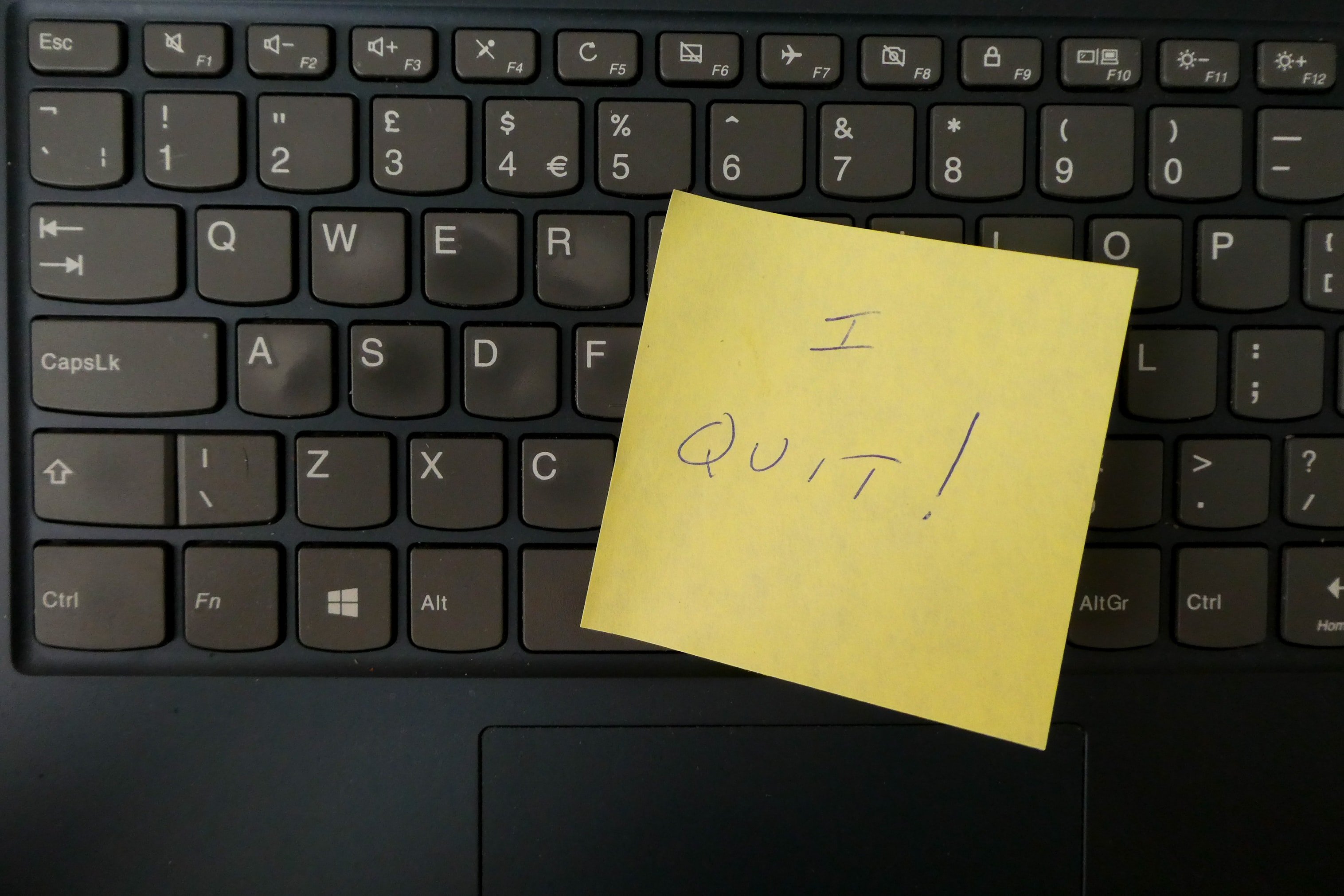Quiet Quitting vs Work-to-Rule
 Omer Usanmaz
·
5 minute read
Omer Usanmaz
·
5 minute read
Passive resistance in workers is getting more and more common across industries. When employees disengage from their work and refuse to cooperate without confrontation or an open rebellion, this can include tactics such as "quiet quitting," "work-to-rule," absenteeism, and apathy towards their job because of lack of flexibility, among many reasons that can cause workplace burnout. Passive resistance can happen for a variety of reasons. Some employees may be dissatisfied with their job or working conditions and may disengage to express their dissatisfaction without risking disciplinary action or termination. Others may need help with the culture fit of the company affecting their ability to perform their job duties.
In cases where the net impact of their work is dropping off a cliff, employees may need more motivation or engagement. Passive resistance can be a side effect due to a perceived lack of transparency from management, insufficient communication policies or a lack of trust or respect from colleagues. It can also result from poor management styles or improper implementation of a hustle culture mentality when employees feel they need more autonomy or decision-making power. Even in one employee, passive resistance can negatively impact a company's productivity. Managers need to act as culture managers to address issues contributing to passive resistance and work with employees to find ways to improve motivation.
What Is Quiet Quitting?
Quiet quitting is when an employee disengages from work but does not formally submit their papers. The practice can manifest in various ways, such as losing interest in putting in the effort, failing to meet deadlines regularly, not participating in company activities, and losing the cutting-edge productivity they used to have at the beginning of their tenure. This passive resistance can signify dissatisfaction with the job, workplace, management, or working conditions, and it can indicate an underlying problem that the employee may not feel comfortable expressing directly. Quiet quitting can harm the overall morale of a company, and it's essential for management to address any issues contributing to the attrition of workers from their company to competitors at a rapid rate.
Is Quiet Quitting a Bad Thing?
Quiet quitting is a negative thing because it can negatively impact a company's outlook in the short and long run. When an employee disengages from their work, it can lead to missed expectations, lower work quality, and a gradual decline in overall output. This can affect not only the career prospects of the quiet quitter committing these but also reflects the office life to expect when working for the team and the company. Quiet quitting can often signal deeper issues within the company, such as a lack of an accountability structure and communication or a toxic work environment, and become something that needs to be addressed.
In a world where hybrid workplaces are bridging the gap between a high-impact job with a modicum of a work-life balance, some workplaces force the employees to work only from the office, adding that pressure back on the plate. It's not always right to shift the blame to workers as that adverse impact can further lead to feelings of dissatisfaction, apathy, and burnout. Quiet quitting can also signify that an employee may be facing professional problems affecting their ability to perform their job duties.
Is Quiet Quitting the Same as Work-to-Rule?
While "quiet quitting" and "work-to-rule" are both forms of passive resistance by employees, they revolve around different tactics and can drastically affect a company.
"Quiet quitting" is when an employee disengages from work but does not formally quit. This manifests in inattentiveness, not putting in the effort, not staying committed, and not showing interest as they once used to. This type of passive resistance can signify dissatisfaction with the job, or workplace, lack of location flexibility, or an office life out of balance.
"Work-to-rule" refers to employees following strict rules and regulations of their job to the T but not going above their duties. This can slow down productivity, as employees work within the minimum job requirements. This passive resistance can signify dissatisfaction with the lack of autonomy and poor working conditions. It can become a concern for employers when they need to keep hiring and, or lack values that the core goals of that person align with.
While "quiet quitting" is more about disengaging from the work, whereas "work-to-rule" is about having strict boundaries and following the rules to the point where you don't go even an inch beyond the job requirements.
What Can Employers Do About Passive Resistance?
Employers have a lot on their plate more often than not. Still, when it comes to retaining their employees, they must provide them with the option to coordinate together and work as a collective when giving you inputs on how to build your company forward. A trade union membership can help massively as the union can negotiate contracts and discuss conditions with employers, keeping employee satisfaction high and protecting workers from unfair working conditions. The decline in trade unions has become the Achilles heel in identifying the underlying cause of passive resistance. The management is responsible for talking to the employees and understanding the reasons behind their decline in performance. This can be done through one-on-one meetings, employee surveys, or team meetings.
Once you understand the cause of the passive resistance, managers need to communicate with the employees and listen to their concerns. Employees are more likely to be engaged when they feel their opinions are valued and their concerns are heard. You can improve working conditions by engaging your employees and workers in collective action instead of singling out anyone to stand up for themselves repeatedly. If passive resistance is caused due to remaining in processes of previous generations, it is essential to make changes and match the world around them to improve the situation. It starts with providing better equipment, improving the physical work environment, or creating a more positive company culture. When you're communicating well, you can also give the employees the freedom to make more decisions and feel like they have control over where they are leading their lives, allowing them to take higher levels of ownership of their work. This will increase motivation and engagement.
When a lack of skill or knowledge causes the employee to lose the pace they are carrying into the tough corners, employers can provide learning and development opportunities to help employees improve their skills and advance their careers. You can address a toxic work environment only when you recognize it. If a toxic work environment causes passive resistance, employers should take steps toward addressing the issue. This includes dealing one-on-one with bullies and talking out negative behaviors that decrease productivity, improving communication, and promoting a healthy work culture.
When you recognize that life is not all about work and when someone acts out, there can be more reasons underneath the layers; you can provide emotional support and the resources they need. Work is all but a part of a person's every day. When something goes away in the personal life, it can also cause passive resistance; employers can help employees through difficult times through an employee assistance program or counseling services. It's important to remember that addressing passive resistance is not a one-time fix; it requires consistent effort and a willingness to listen, understand and act on adapting systems to your employees' needs.
How Do You Fight Burnout Without Quitting Your Job?
Feeling the heat of your profession is an experience that no one looks back with fondness, but fighting burnout without knowing how to can become challenging. There are steps you can take to help reduce burnout and improve your overall well-being.
Start with prioritizing self-care physically and emotionally. This includes getting enough sleep, eating a balanced diet, exercising whenever possible, and engaging in activities that you enjoy wholeheartedly. Set boundaries before you cross over to the other side; learning to say "no" when you are overworked can be hard, but it's a vital step in setting limits on the amount of work you can willingly take on and perform at the level you should. Take breaks throughout the day to recharge your energy and avoid prolonged periods spent working. Re-evaluate your workload to see if any tasks can be delegated or eliminated because of time constraints. Seek help when you feel the burnout sinking in time and again; this can include talking to a therapist, joining a support group, or finding resources to help you cope with the burnout.
Find a work-life balance with decompressing activities and indulging in hobbies. It is essential to have a balance between work and personal life. The time you spend alive and happy can always include spending time with family and friends and doing things you enjoy.
Getting an idea of how you are doing and where you can improve can help you determine where you are at your job. Burnout is not a personal weakness, and the lack of true flexibility is a common issue in today's fast-paced and high-stress work environment. By taking steps to address burnout, you can not only improve your well-being but also improve your performance at work.





